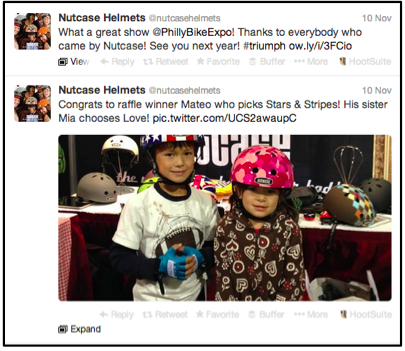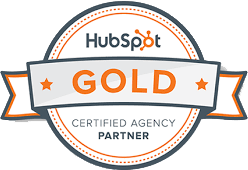In my last blog post, I gave advice for carrying out a successful live tweeting event. Perhaps some of you even followed our client, Nutcase Helmets, to see how they fared at the Philly Bike Expo.
So, now what? With all your effort working up to the event and at the event itself, maybe you’re now back at your desk, patting yourself on the back. Don’t get too relaxed: your job isn’t over yet!
Live Tweeting, Phase Two: After the Event
Content 
- Your audience is still listening. Share your favorite moments, your key takeaways, or your best pictures from the event. Continue using the event hashtag for all follow-up posts.
- Keep the ball rolling with engaging content. With your newly-acquired fans tuned in, don’t be a lazy channel. This is your chance to provide rich, captivating content! Prove to your new followers that your brand manages a must-follow channel.
Partnerships
- Thank your new connections and thank your contributors. In networking, getting a few business cards in your pocket is only the beginning. You’ve entered into a relationship with a new audience and thought leaders, so now is the time to strengthen those roots.
- Know when comments should be public and when they should be private. Don’t flood your stream with conversation pertaining only to an individual. Twitter is an ideal platform for communicating with your new followers, but use direct messaging whenever appropriate
Analytics
- Look at key performance indicators against your company’s unique strategic goals. There’s no cookie-cutter approach to pulling numbers. That said, what were you looking to get out of the event? Did you accomplish this? What does that look like in your data?
- Don’t limit your research to one tool. To get the most meaningful data, move beyond your main listening tool and just the channel itself. A few of our favorite supplementary tools are Tweet Reach, Tweet Binder, Simply Measured, and Measureful. Combine these with your usual analytic tools to get an optimized perspective.
- Success is measured by more than an increase in followers. Numbers that reflect your engagement levels, reach/impressions, or hashtag analytics may give you a more meaningful understanding of what worked and what needs improvement for future events.
- Measure fairly. Given that your outreach program focused on the week of the event and not just the day or two of the event itself, pull your numbers for the week of as well. Compare these to a week prior. If you pull from Wednesday through the following Tuesday, pull the Wednesday through Tuesday of the week prior. Pulling a 10-day report looking at one weekend and comparing it to a 10-day report spanning two weekends won’t produce an accurate comparison.
Takeaways
- Revisit your stream. What were the posts that gained the most engagement or comments? Who was actively participating? Why were those posts top performers?
- Have a team meeting to bring everyone in on the results. What went well? What were the struggles? Regardless of whether you’re new to live events, there is always something to learn from the process. Take note of the time commitment required so your HR department plans resources appropriately around the next event. Show your executives your stellar numbers so they know the value of your social efforts: maybe the next event will be in Paris and you’re in the budget to go as the live social media manager!
Any event is only as meaningful as what you learn from it. Even on a trip to Paris. By applying these tips and techniques I’ve outlined here and in my earlier post, you’re well on your way to becoming an event master. For further recommendations of best practices follow us @mambomedia. Congratulations on your victory, Nutcase, and to all, bon voyage!


